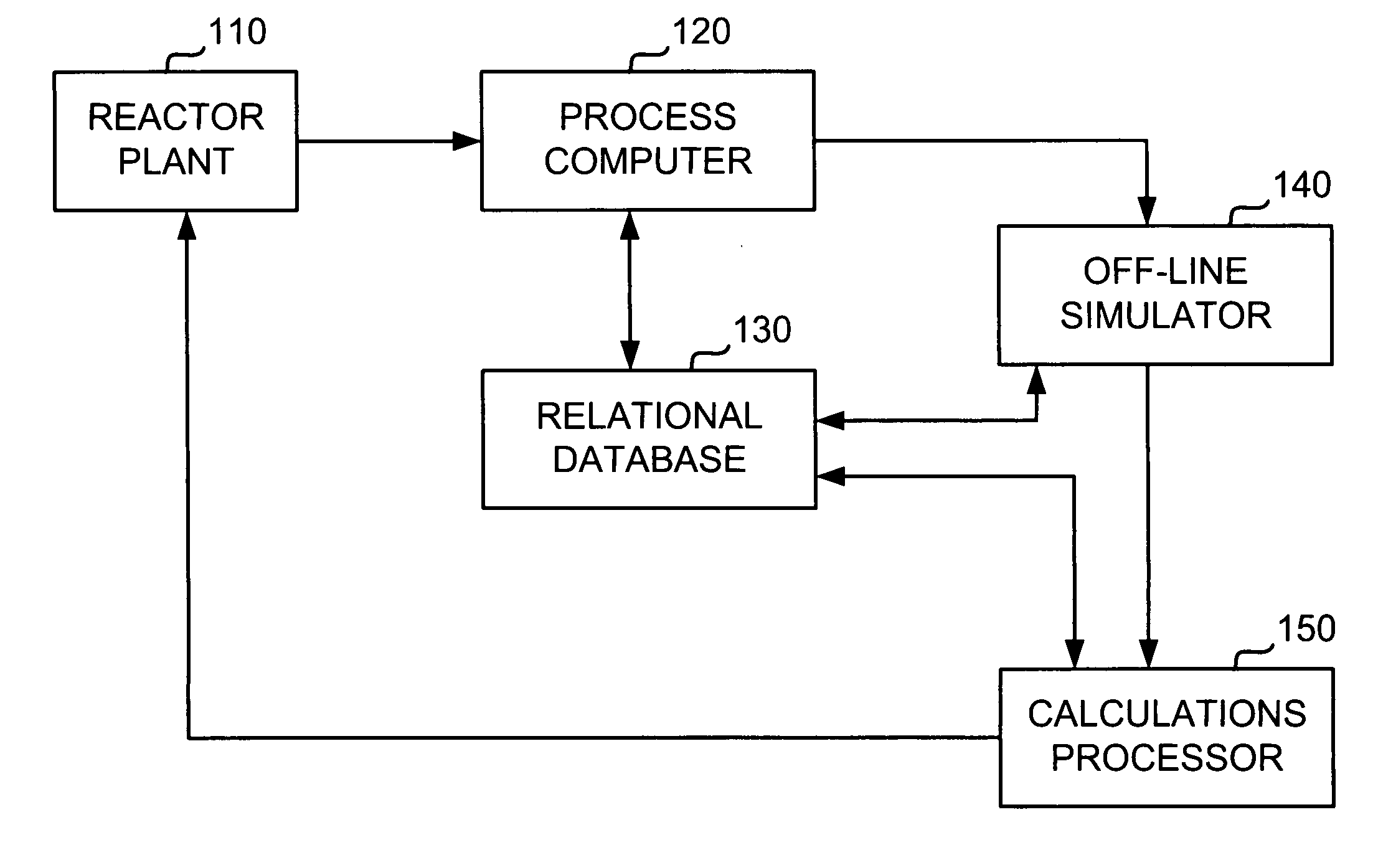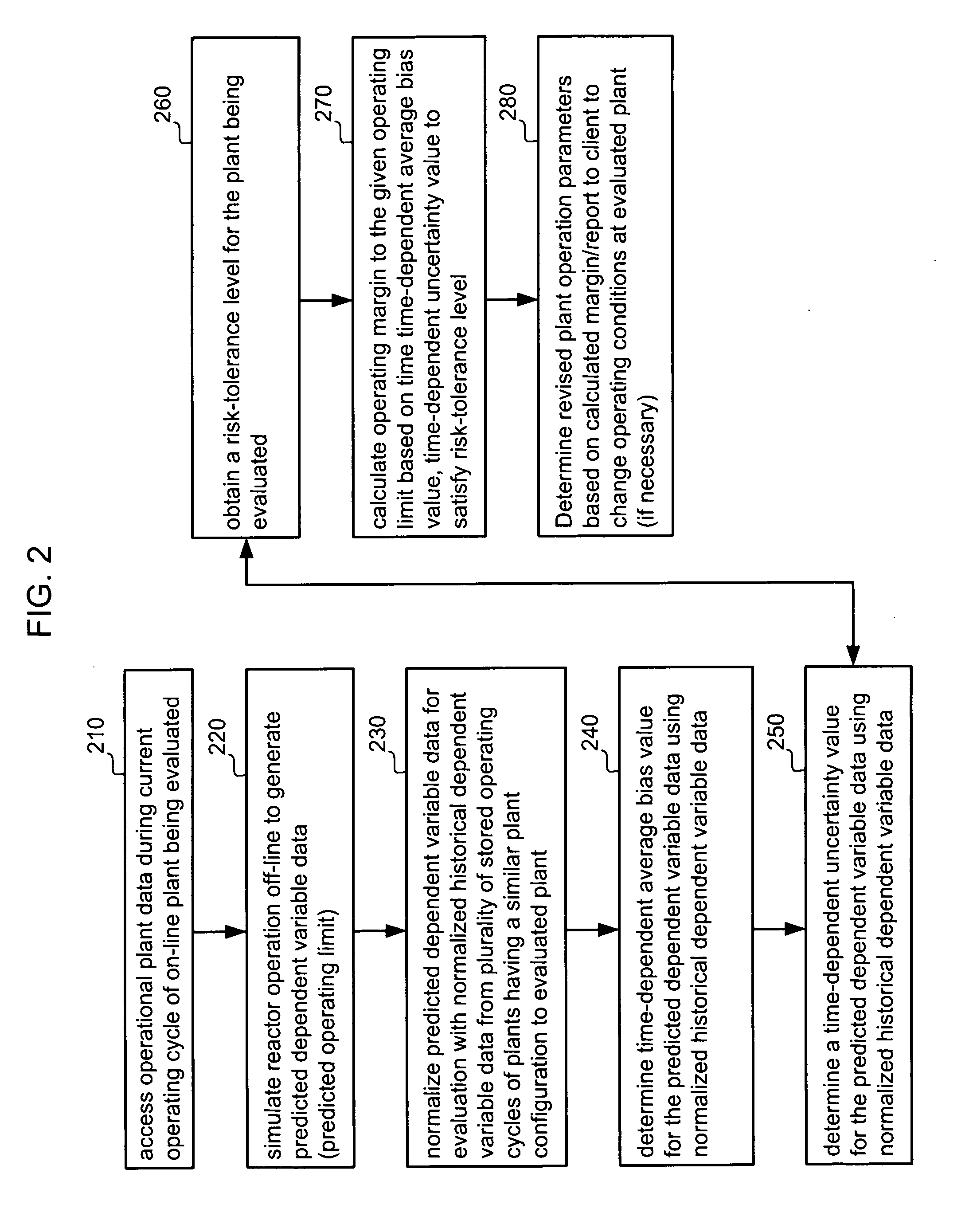Method of determining margins to operating limits for nuclear reactor operation
a technology of operating limits and nuclear reactors, applied in nuclear elements, nuclear engineering problems, greenhouse gas reduction, etc., can solve the problems of large-scale margin requirements, adverse economic effects of “larger than needed” margin requirements on the plant, and exposure-dependent biases
- Summary
- Abstract
- Description
- Claims
- Application Information
AI Technical Summary
Problems solved by technology
Method used
Image
Examples
example
[0047]FIG. 6 is a graph of predicted eigenvalue versus normalized time to illustrate differences in the predicted margin as a result of simulation and the margin as determined by the example methodology herein. FIG. 6 illustrates an actual calculation of hot eigenvalue for power operation and cycle length considerations. The initial conditions where to evaluate future eigenvalue predictions at all exposure points greater than 20% into the cycle (T=0.2) with a customer provided risk-tolerance level of 75%. Therefore, the customer would want to be 75% certain of having the required reactivity (i.e., power and desired cycle length). The multiplier factor K based on this probability, taken from any statistics book, was 0.68. The known actual eigenvalue (normalized) at T=0.2 is 1.0050.
[0048] In FIG. 6, curves were generated for the nominal predicted eigenvalue and for the 75% probability of non-event eigenvalue. Because there are only seven groupings of data or data sets in this example...
PUM
 Login to View More
Login to View More Abstract
Description
Claims
Application Information
 Login to View More
Login to View More - R&D
- Intellectual Property
- Life Sciences
- Materials
- Tech Scout
- Unparalleled Data Quality
- Higher Quality Content
- 60% Fewer Hallucinations
Browse by: Latest US Patents, China's latest patents, Technical Efficacy Thesaurus, Application Domain, Technology Topic, Popular Technical Reports.
© 2025 PatSnap. All rights reserved.Legal|Privacy policy|Modern Slavery Act Transparency Statement|Sitemap|About US| Contact US: help@patsnap.com



